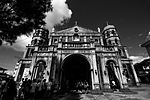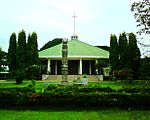Trece Martires
1954 establishments in the PhilippinesCities in CaviteComponent cities in the PhilippinesPlanned cities in the PhilippinesPopulated places established in 1954 ... and 3 more
Provincial capitals of the PhilippinesUse Philippine English from September 2022Use mdy dates from September 2018

Trece Martires, officially the City of Trece Martires (Filipino: Lungsod ng Trece Martires), is a 4th class component city and de facto capital city of the province of Cavite, Philippines. According to the 2020 census, it has a population of 210,503 people. The city was the provincial capital of Cavite until President Ferdinand Marcos transferred it to Imus on June 11, 1977. Despite the capital's relocation, the city still hosts many offices of the provincial government. According to the 2020 census, it has a population of 210,503 people, and an income classification of 1st class.
Excerpt from the Wikipedia article Trece Martires (License: CC BY-SA 3.0, Authors, Images).Trece Martires
Governor's Drive, Trece Martires
Geographical coordinates (GPS) Address Nearby Places Show on map
Geographical coordinates (GPS)
| Latitude | Longitude |
|---|---|
| N 14.28 ° | E 120.87 ° |
Address
WalterMart
Governor's Drive
4109 Trece Martires
Cavite, Philippines
Open on Google Maps








